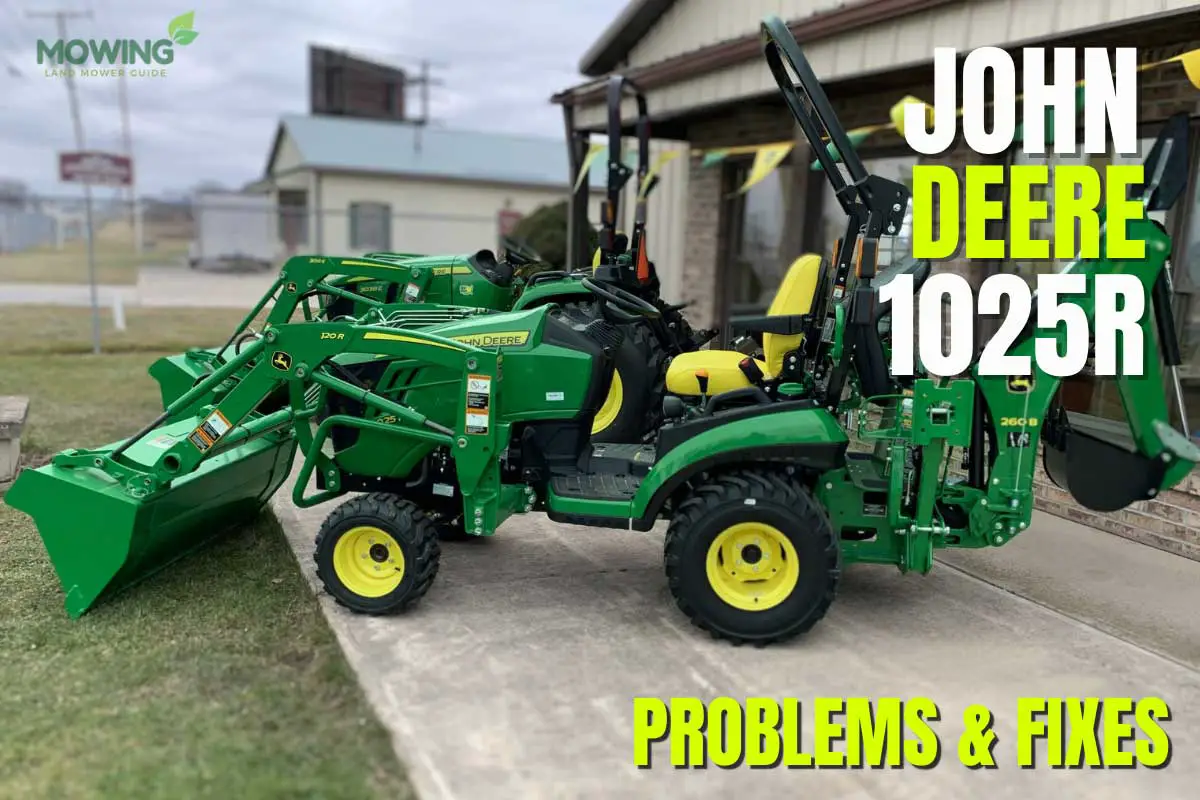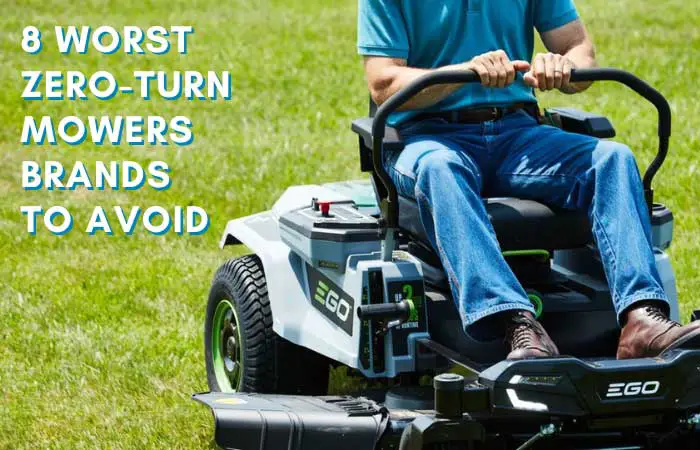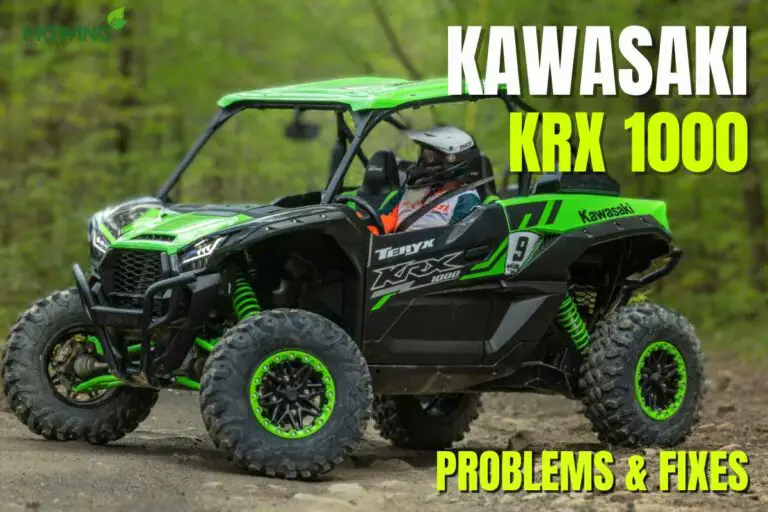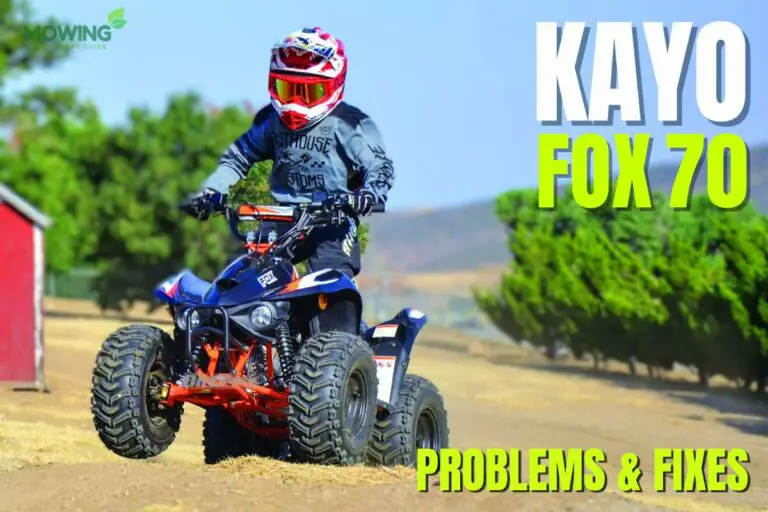
John Deere 1025R is a sub-compact tractor with power up to 25 HP. Such a productive tool can make life much easier for small-scale farmers. Despite being a boon to many, the John Deere 1025R hydraulic problems cannot be overlooked.
The John Deere 1025R is itself a hydraulic, including a 3-point hitch. It can lift up to 344kg. Besides, the tractor has dual hydro-static transmission. Having issues with such a hydraulic system-based effective tool is not unusual.
John Deere has many problems as well as solutions. We will take a deeper look into these issues and the quick fixes. You can follow the troubleshooting instruction and get your John Deere 1025R back in the field.
John Deere 1025R Hydraulic System – A Quick Overview
A hydraulic system is a complex fluid-based system that transfers energy and converts energy into practical work. John Deere 1025R uses such an open-center hydraulic system. It drives the fluid to move.
John Deere 1025R’s function is to hydraulically raise, hold, or lower mounted or semi-mounted equipment. The system helps to travel from one side to another without glitches. You can get around the farm without spending money on the fuel bill.
John Deere 1025R Hydraulic Problems
Having a John Deere 1025R tractor leads to many hydraulic problems. Like most engines, the John Deere will likely lose speed and performance with use. Various factors can cause John Deere 1025R hydraulic problems.
You can quickly diagnose hydraulic system problems because they move slowly and become too noisy. A faulty hydraulic pump, changes in oil and pressure, or leaks in the system can cause the hydraulic mechanism of John Deere to malfunction.
Luckily, there are solutions to all these John Deere 1025R problems. Let’s look into some of the common John Deere hydraulic problems and find their solution.
Problem 1: Hydraulic Lift Problems
Sometimes, your John Deere 1025R will tend to lift the arm in a jerky manner, not smoothly. Also, the lift arms of the hydraulic system won’t lift at all sometimes. It is one of the typical John Deere 1025R hydraulic lift problems.
The hydraulic system may fail to send a constant oil flow to the ram. However, the ram needs sufficient oil to lift the link arms. The system requires fluid to protect hydraulic pump motors, hydro-static pumps, and charge pumps.
An adequate oil level is also necessary for proper drive, steering, and lift cylinder action. Sometimes John Deere 1025r rear hydraulic lift problems occur when there are leaks in the transmission fluids. Leaking transmission fluid causes a burnt smell, gear slippage, or gear shift delays.
How to Fix It?
First, check the oil level in the reservoir by lowering the boom. See if the oil is up to the full mark on the dipstick. If not, add oil until it reaches the “full” mark. Also, check for any leaks.
You will likely find a faulty connection, hole, or crack in any transmission line. It is causing leaks in the transmission lines. Seal the leaking point or replace the seals to fix the problem.
How Often Should You Change Oil in the John Deere 1025R?
John Deere 1025R should change its oil every 50 hours or at the end of each season. If you use it frequently for heavy-duty operations, you should change it every 50 hours. Otherwise, you can consider changing the oil yearly for light-duty tasks.
Problem 2: Slow Operation
The lift arms of the John Deere hydraulic tractor can go up and down too slowly. Therefore, the speed of the hydraulic decreases. The speed can also decrease because of prolonged use.
This could happen when the hydraulic oil changes the pressure and density of the tractor. The oil is most likely contaminated with water, which affects its pressure and density.
Also, the system operates slowly when the hydraulic filter becomes clogged with dirt and debris. The clogged hydraulic filter prevents oil from flowing to the lift arms. Hence, the lift arms of the tractor move slowly.
How to Fix It?
Check the hydraulic filter and drain the hydraulic system if needed. Replace the contaminated hydraulic fluid with pure hydraulic oil.
Problem 3: Faulty Hydraulic Pump
A faulty hydraulic pump is most likely the main offender of hydraulic system malfunctioning. It can lead to issues like loss of power, leaks, and erratic operation.
How to Fix It?
The problem may be in the fluid level if the hydraulic pump isn’t working correctly, the problem may be in the fluid level. Check the fluid level. The low fluid level denotes the leaks in the system. If the fluid level is satisfactory, you need to check the system’s pressure.
Make sure the pressure is in between the factory satisfactions. If the pressure is not within the factory specifications, you may need to replace the hydraulic pump. If the problem still persists, take your John Deere 1025R to the experts.
Problem 4: Leaks in the Hydraulic System
The leaks in the hydraulic system cause the tool to malfunction. The John Deere 1025R can have leaks in the hydraulic hoses, clamps, fittings, and other hydraulic assemblies. Leaks in these hydraulic assemblies lead to John Deere 1025R hydraulic coupler problems.
How to Fix It?
There are several actions you can take to fix the leaks in the hydraulic system.
- Tighten the fittings, adapters, and hose clamps.
- Minimize the number of connectors used in the John Deere hydraulic system.
- Keep the system running at a lower temperature to avoid premature wear and leaks.
- Use the right fittings for the hydraulic system.
- Reduce vibration, as excessive vibration cause fatigue, affect torque, and puts a strain on hydraulic systems.
Read also: 9 Common CFMOTO UFORCE 1000 Problems & Fixing Guide
Other John Deere 1025R Problems and Its Solutions – At a Glance
| John Deere 1025R Problems | Possible Solutions | |
| Engine Problems | – Difficulty in starting the engine – Faulty oil filter – Overheating – Faulty hydraulic system | – Place the gearshift lever in either a high or low range. – Clean the terminals, tighten the electrical belt, and invest in a coolant – Use high-grade fuel and oil – Replace the damaged batteries immediately |
| Transmission Problems | – Neutral shift lever positioning – Cold transmission oil – Low transmission oil level | – Keep the shift lever in a neutral position – either a high or low position – Keep the oil warm – Fill the oil before it falls below the minimum fluid level |
| Electrical Problems | – The battery isn’t charging – Battery with corroded terminals – The lights aren’t working | – Connect the battery properly – Clean the corroded terminals – Tighten the electrical belt – Replace the damaged battery |
| Brake Malfunction And Steering Issues | – Faulty brakes and steering – Faulty oil filter – Deficient lubrication – Bent from axleImproper tire inflation | – Replace the lousy air filter – Inflate the tire appropriately – Inspect and repair oil filters regularly |
| Deck leak | – The uneven deck behind the mower – Deck on a John Deere 1025R won’t raise or lower | – Find a compatible mower model |
| Fuel System Issue | – Clogged fuel filter – Fuel leaks – Poor engine performance | – Start the engine several times – Contact a mechanic to fix it |
| Rock Shaft Problems | – The hitch falls off the rock shaft – Shaky rock shaft | – Lifting arms – Replacement of snap rings and rock shaft |
| PTO problems | – The PTO selector lever is stuck – Faulty PTO clutch | – Change the brakes on the PTO – Clean the hoses |
Final Thoughts
The John Deere 1025R is a small yet robust machine. It is perfect for light-duty tasks like mowing and carrying to heavy-duty tasks such as tilling or plowing. Besides benefiting, users are struggling with John Deere 1025R hydraulic problems at the time.
Hopefully, you don’t have to from now on. If you encounter any similar hydraulic problems subsequently, you now have ways to address the issue. In fact, you can deal with any of the John Deere 1025R problems. Best of luck!
Read also: 8 Worst Zero-Turn Mowers Brands to Avoid






